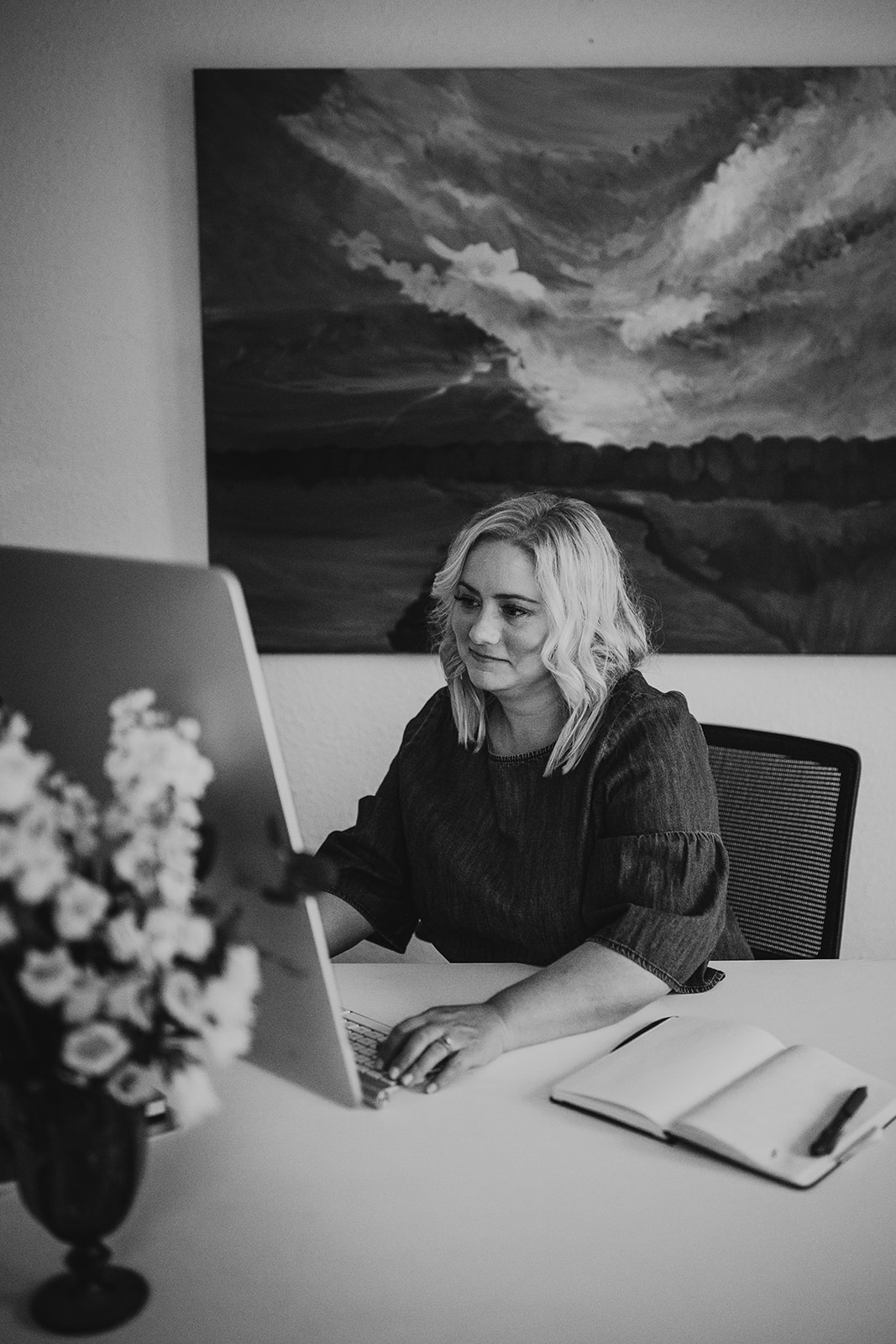Picture this, you are in your office. It’s a dreary Tuesday and you are mentally exhausted. You feel the tension in your neck from too many stressful situations and despite all your efforts you are simply unable to focus. What do you do? Most likely you push on through while trying to avoid thinking about what is bothering you, check your email, rearrange your office supplies, or perhaps go for yet another coffee run.
When I think about this scene, I am instantly teleported back to my corporate career before I discovered the mental health benefits of painting. I felt that I was being a model employee by pushing through. Physically this meant I would skip my workout, grab lunch at the cafeteria and eat while working at my desk or continue to work while everyone went home. While this was a quick fix, it was not sustainable and in the long run hurt my performance at work and my ability to be present for my family and myself.
I quickly established habits and boundaries to ensure that at least most days I was meeting my physical needs. I even had a conversation with someone I worked with that suggested that I needed a hobby, but at the time, I couldn’t see how I could fit it in. Unfortunately, it was not until several months later that I realized I needed to care for my mental, emotional and creative needs the same way.
When I discovered the therapeutic benefits of painting I was hooked. This “hobby” allowed me to free my mind. When I was painting I was able to step away for a few minutes and see the situation from a fresh perspective; I was able to engage different parts of my brain allowing my mind to work on creative problem solving, and I was able to relax enough to restore my energy and not be short with my co-workers.
Today, I am fortunate to teach this method to individual employees and work teams. Now don’t get me wrong, I don’t expect you to suddenly whip out an easel, don your best painting clothes, and spend the afternoon creating a new masterpiece for the East Conference Room. Instead you can carve out time in your day that you dedicate to painting just like you would for your workout (i.e. right after work or a lunch hour) or you can decide to modify your painting practice so you can easily restore your mind with creative expression at work and in under 15 minutes.
As you are likely looking for the fastest but still effective method let’s focus on the latter and create a way to paint with ease.
Consider your work environment and when you find you are most in need of a mental health break. Are you able to step out of the office? Are you able to find a secluded place to paint on your break? Some of my favorite spots are coffee cafes, park benches, and break rooms.
What artistic supplies do you need? Would a paint-by-number workbook help you or do you want to use paint paper or a canvas? I personally need a blank canvas or watercolor or acrylic paper and I have created a free guide that lists basic supplies that you can keep in your “Paint Flow Bag.” You can access this guide by clicking here.
Define why you are doing this and what boundaries are you going to take to help you make the most of this time? For me, my Paint Flow Bag is like a school hall pass. When I have it in my hand, my mind is able to start transitioning from work to a dedicated break. I choose to leave my normal work space, place my phone in airplane mode, set a timer, and paint while some relaxing music plays in my earbuds.
Therapeutic painting is a way for you to artistically create and observe your painting, where you can feel, think, and process before, during, and after you paint so that you can resolve, refocus, create margin, increase productivity, confidence, satisfaction, and fulfillment while reducing burnout. With therapeutic painting you are trading burnout for flow so you can thrive in your career and in your personal life.
If this sounds intriguing to you, come work with me in 1:1 Painting Sessions. To discover if these sessions are right for you, please visit this page to learn more.

Comments will load here
Be the first to comment